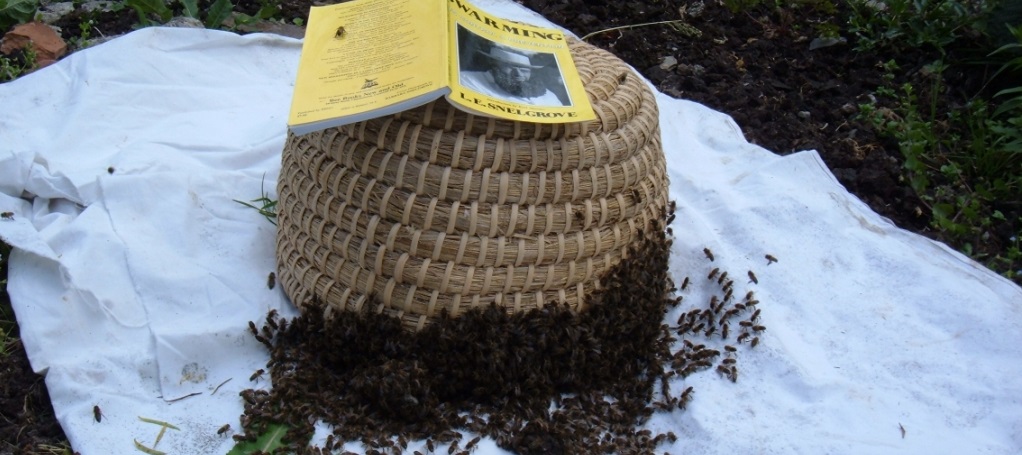Hiving a swarm is usually a trouble-free operation but it can all go horribly wrong. Here are a few points to consider which may affect the success of the operation:
- Whichever method you choose – bees should be hived at dusk or late in the afternoon so the bees don’t have time to swarm out again before dark. That way they will have all night long to consider their position.
- Bees will swarm if they think they are in danger of starvation so even if there is a strong flow in progress and the weather is set fair (ha-ha fat chance!) give them plenty of feed and they will stay put. Make sure you prime the feeder properly especially if you are using sugar syrup which has very little smell to draw the bees up.
- If your swarm has been hanging from a tree in your apiary for some time, the ‘3 feet or 3 miles’ rule will apply. In such cases it is a good idea to take the swarm elsewhere to hive it or the bees will be confused and continue to home in on the tree. Remember – they are all flying bees!
- Depending on how long your swarm was hung up before you came upon it – it may or may not have a queen. If a queenless swarm is hived close to the colony it issued from – it will just evaporate as all the bees can go ‘home’. If you brought it in from elsewhere, queenlessness could be less obvious and it will slowly dwindle.
- Unite a queenless swarm with another colony but first be sure it is queenless. Puny virgins can be horribly efficient at dispatching a great big laying queens – they’re probably faster on their feet.
Here are three methods of hiving a swarm:
Click here for the Hiving a swarm: the Easy Way
Click here for Hiving a swarm: the Pretty Way
Click here for Hiving a swarm: the No-Frills Way
First Swarm – or how not to hive a swarm
Copyright © Beespoke.info, 2015. All Rights Reserved.
